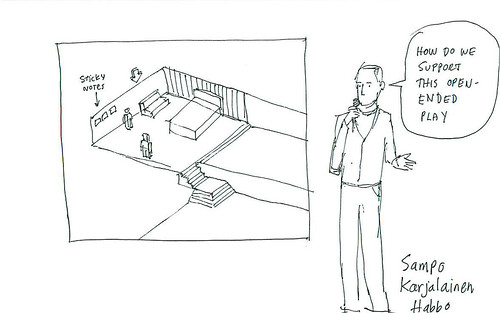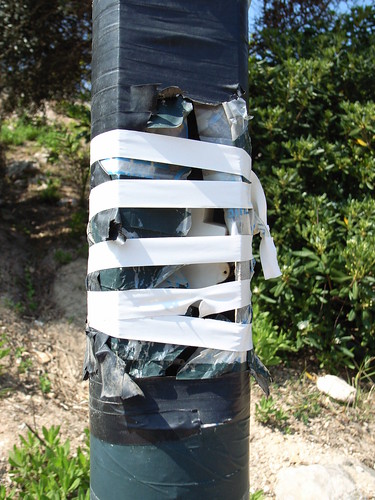Today at the urban sociology department, the "Penser l'espace", Jef Huang (LDM) gave a talk about "Electronic urbanism: future of space and role of authorship". It's very close to his talk at LIFT06. Raw notes below:
Even though the title is "electronism urbanism", Jef's work rather focused on smaller dimension such as architecture or virtual worlds but it might lead to electronic urbanism at some point. The premises of his research is a strong belief that the massive proliferation of communication networks and devices will change some of our most basic social activities (work, learn, shop). This shift has economic drivers and there are several dying species coming from the industrial ages. Amazon as an epitome of the shift form the physical to the virtual.
So what will happen in 5-10years? will we still need physical space?
Yes, and there are examples of new forms of space which are twofold: one the one hand, mega fulflillment center: huge new building with distribution centers, back-end of Amazon google data center, underground server farms. ON the other end, some are also the front-end, new typologies such as the yahoo! store, the google store, m*zone (samsung chain of physical store: a virtual company creating space so that clients can meet each others), information kiosks
What is interesting is that when these buildings choose their sites, there are new rules: access to highways, topographies, there is a new invisible layer that comes on top of the landscape, for instance, the map of fiber routes in NYC, that affects housing prices (because people want to have accesses). This affects the morphologies of future cities
the phenomenon:
learn: classroom - e-learning environment
work: office - virtual office
shop: physical retail store - virtual shop
play: playground - game environment
...
But it's an "either-or" phenomenon, there is nothing in between, Jef's work is about studying what can be in-between. To what extent could virtual activities have a physical component? TO what extent can physical architecture/elements (furnitures) act as an interface between emerging virtual worlds and physical realities.
One of the elements about this is open design: the involvement of the user in the design process, that can be trace back form Duchamps (Rotating Glass Plates, 1930) or Oulipo (raymond queneau 100,000,000,000,000 poems combinatorial poetics, 1961). Back to urbanism, a question is then "is open architecture desirable in architecture or urban design?" The problem: "a camel is a horse designed by a committee" (I miss some elements here)
Another question is "what is the role of the designer in an open design piece?" The common misconception is that not, the designer's role is not less important. Only the design is not longer in the final form but the rules of the game have to be designed. What is needed for design of openness: basic rules, algorithm, speed of interaction, consent, transparency of authorship.
The new design paradigm: from designing forms and artifacts to designing rules and parameters for forms and artifacts to emerge.
 (Associated Press photo by Paul Sakuma)
(Associated Press photo by Paul Sakuma)


 (Picture is: the My Beating Heart project and a Needie, courtesy of Metropolis Mag.)
(Picture is: the My Beating Heart project and a Needie, courtesy of Metropolis Mag.)






 (Images taken from
(Images taken from 



